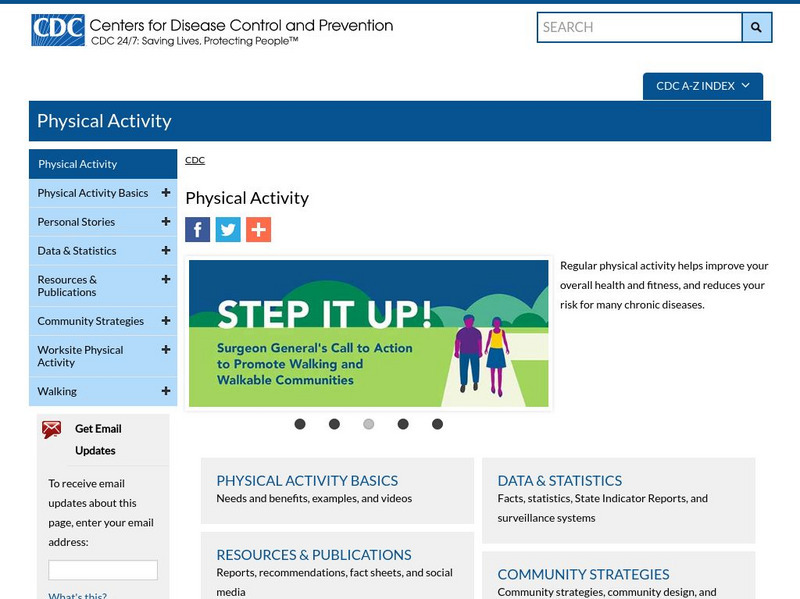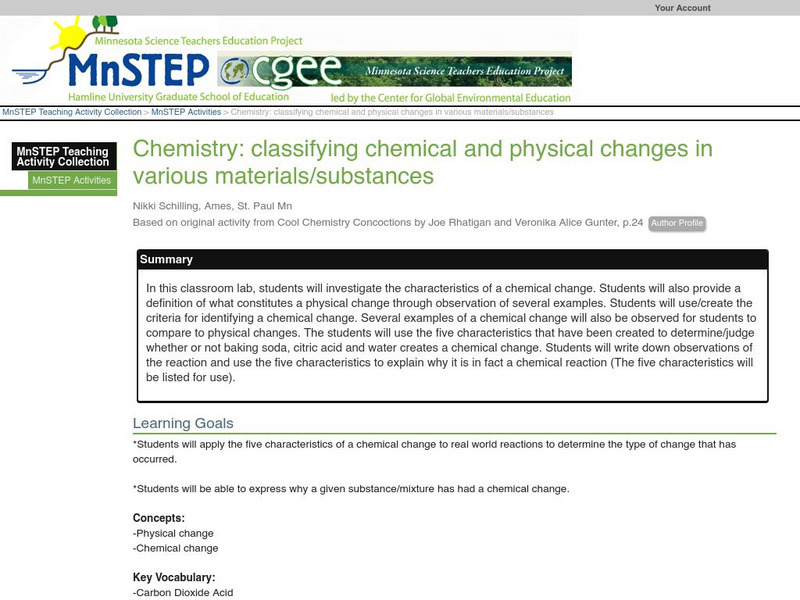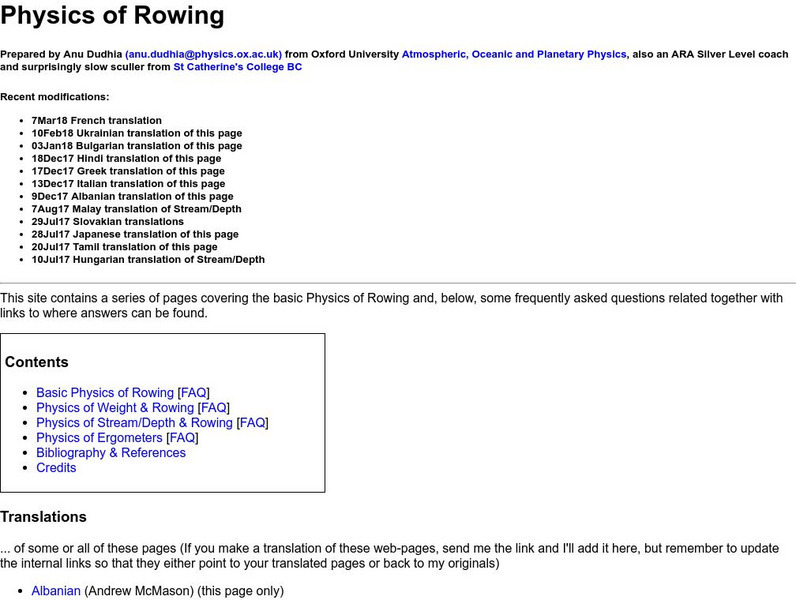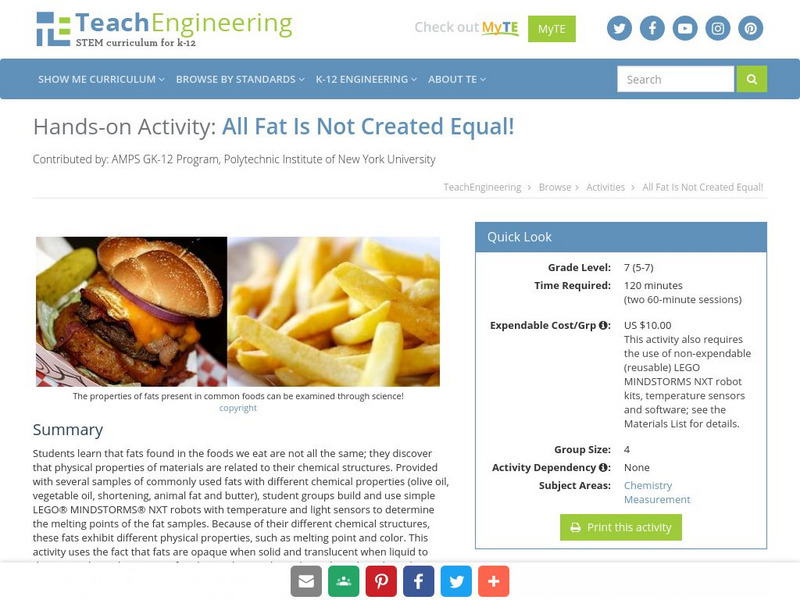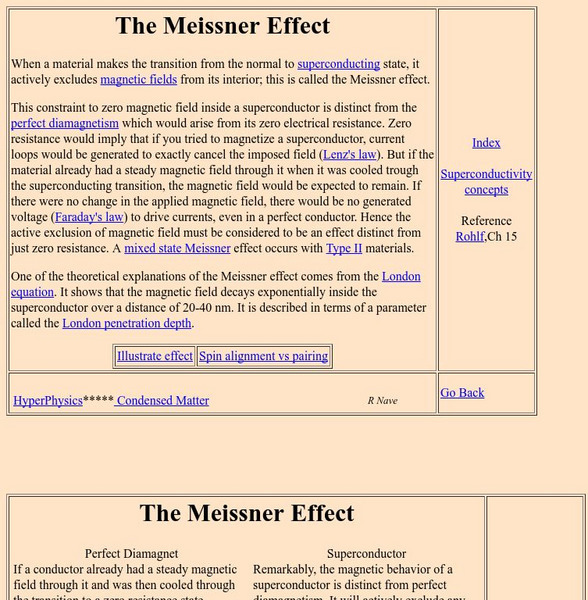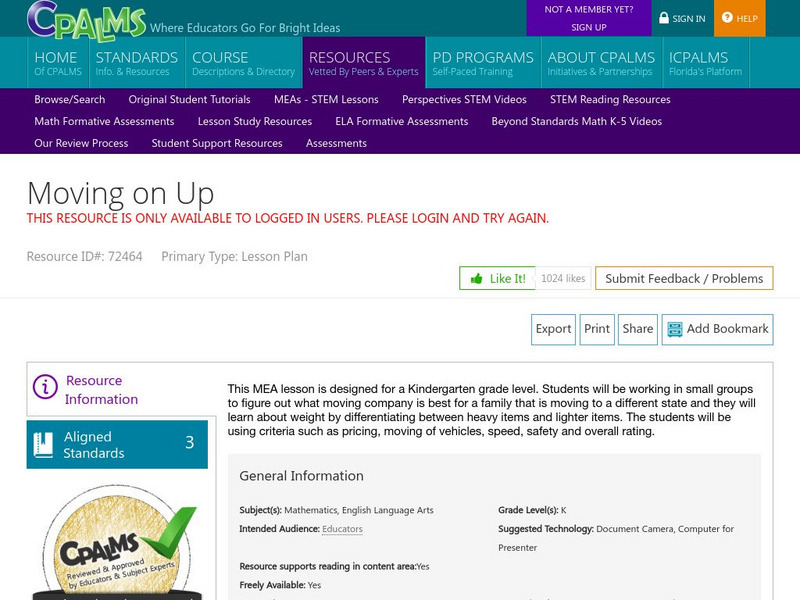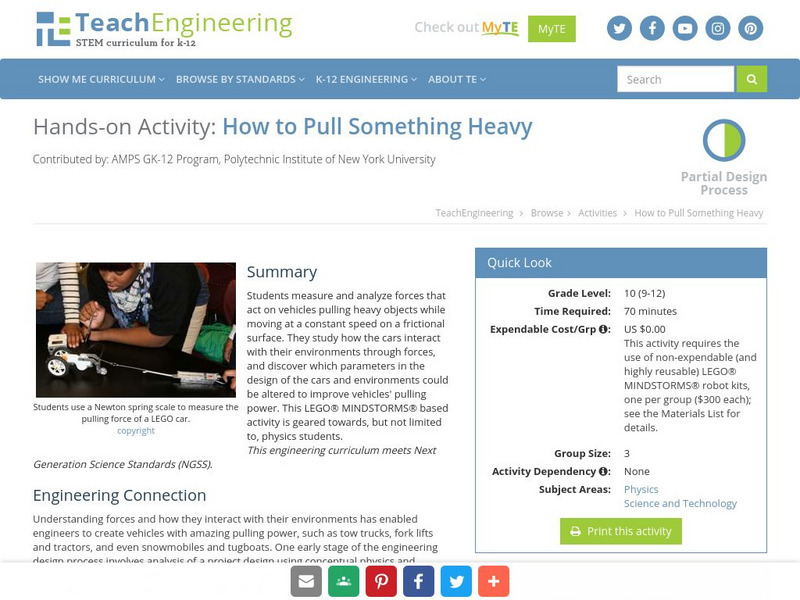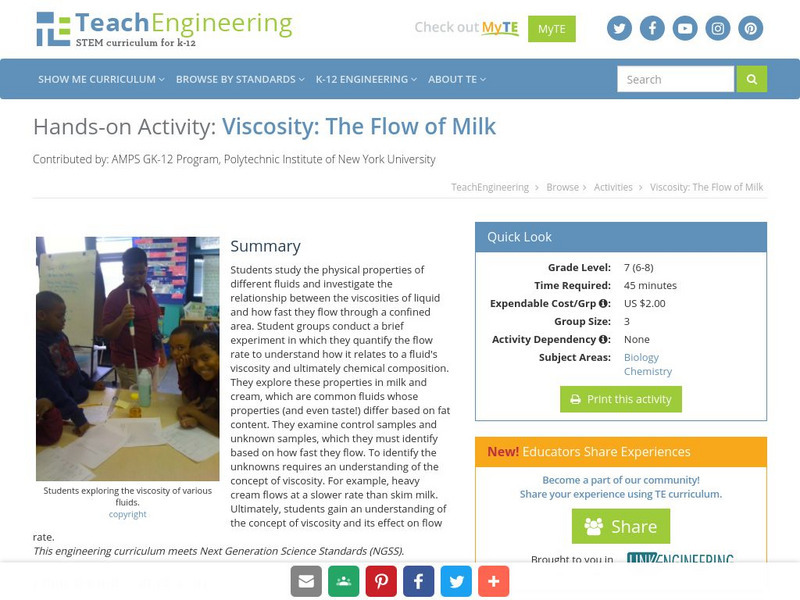Centers for Disease Control and Prevention
Centers for Disease Control: Physical Activity and Health
A six-chapter report by the Surgeon General in 1999, "Physical Activity and Health" provides research on the health benefits linked to physical activity. Though this article is very long, key ideas and facts can be easily obtained...
Centers for Disease Control and Prevention
Centers for Disease Control: Physical Activity Introduction
Who needs physical activity? How can it help? Find out here with this introduction to physical activity from the CDC.
McGraw Hill
Glencoe: Online Study Tools: Quiz on Physical Activity and Personal Fitness
Learners show comprehension of physical health. The online quiz assesses the scholars on physical activity and personal fitness.
Science Education Resource Center at Carleton College
Serc: Classifying Chemical and Physical Changes in Various Materials/substances
In this classroom lab, students will investigate the characteristics of a chemical change. Students will also provide a definition of what constitutes a physical change through observation of several examples. Students will use/create...
University of Oxford (UK)
Oxford University: Faq: Physics of Rowing
From the Department of Atmospheric Physics at Oxford University, this page gives a scientific look at the techniques involved in the activity of rowing. Discusses the concepts of propulsion, resistance, kinetic energy, and much more...
Texas Instruments
Texas Instruments: California Practice Exams Science Earth Science & Physics
Students can use these LearningCheck item banks to prepare for the following - California CST Earth Science and Physics practice exams.
Physics Classroom
The Physics Classroom: Inertia and Mass
This is part of a lesson on Newton's Laws of Motion that focuses on inertia and mass. It restates Newton's first law of motion. The lesson also gives a helpful visual description concerning friction.
TeachEngineering
Teach Engineering: All Fat Is Not Created Equally!
Students learn that fats found in the foods we eat are not all the same; they discover that physical properties of materials are related to their chemical structures. Provided with several samples of commonly used fats with different...
Science Education Resource Center at Carleton College
Serc: Our Big Backyard
An activity for students to fine tune their observation skills using their senses in their own backyard. During this activity, students will record their observation to compare and contrast living things over a period of different seasons.
Georgia State University
Georgia State University: Hyper Physics: The Meissner Effect
This site from the Georgia State University provides a good introduction to and illustration of the Meissner Effect, the property of a superconducting material whereby it actively excludes a magnetic field from within its interior.
Science Education Resource Center at Carleton College
Serc: Lab Investigation Mixture Separation
An inquiry lab where students try to separate as much as the pure substance they can in a set time period. This lab helps students understand that physical means can be used to take apart a mixture.
Other
Susan P. Byrnes Health Education Center, Inc.: Learntobe Healthy
Learn To Be Healthy offers student activities and lesson plans for all ages.
CPALMS
Ice Cream Truck Favorites
[Free Registration/Login Required] During this MEA simulation, kindergarten students will determining the top three flavors of ice cream bars that an ice cream truck should serve. Students must work in cooperative groups as they work to...
CPALMS
Moving on Up
[Free Registration/Login Required] During this MEA simulation, kindergarten students will be preparing for a move to another state. Students must work in cooperative groups as they determine which moving company will be the best for...
Other
Earth Science: Earth's Surface and Heat [Pdf]
This textbook chapter looks at the role of temperature in sustaining life on Earth and on weather and climate. It discusses the Earth's movements and the seasons, the circulation of the oceans, wind and weather, and the water cycle....
Texas Instruments
Texas Instruments: A Move in the Right Direction
Students physically provide motion data that is collected by a CBL and then graph the data. They determine if they "moved in the right directions" by comparing their graph with those printed in the activity.
Nature Conservancy
Nature Rocks
Tool for finding nature centers, outdoor events and activities, and services like equipment rentals, campgrounds, and tour guides. Learn how exploring nature helps improve the physical, mental, and emotional health of children and...
Live Wire Media
Good Character: Being Friends
There are certain things you must do in order to be a good friend. Find a list of these things at this website as well as questions and activity ideas that will help you discuss friendship with classmates and family.
PBS
Pbs Learning Media: The Ruff Ruffman Show: Teacher's Guide: Kitchen Chemistry
Learn about kitchen chemistry alongside Ruff Ruffman. Students can use the videos, games, and activities from The Ruff Ruffman Show to discover how by investigating solids and liquids and exploring heating and cooling, science can help...
TeachEngineering
Teach Engineering: How Far Does the Robot Go?
Students practice their multiplication skills using robots with wheels built from LEGO MINDSTORMS NXT kits. They brainstorm distance travelled by the robots without physically measuring distance and then apply their math skills to...
TeachEngineering
Teach Engineering: On Track Unit Conversion
Students use three tracks marked on the floor, one in yards, one in feet and one in inches. As they start and stop a robot specific distances on a "runway," they can easily determine the equivalent measurements in other units by looking...
TeachEngineering
Teach Engineering: How to Pull Something Heavy
Students measure and analyze forces that act on vehicles pulling heavy objects while moving at a constant speed on a frictional surface. They study how the cars interact with their environments through forces, and discover which...
TeachEngineering
Teach Engineering: Haptics: Touch Command
Students experience haptic (the sense of touch) feedback by using LEGO MINDSTORMS NXT robots and touch sensors to emulate touch feedback recognition. With four touch sensors connected to LEGO NXTs, they design sensor attachments that...
TeachEngineering
Teach Engineering: Viscosity: The Flow of Milk
Students study the physical properties of different fluids and investigate the relationship between the viscosities of liquid and how fast they flow through a confined area. Student groups conduct a brief experiment in which they...



